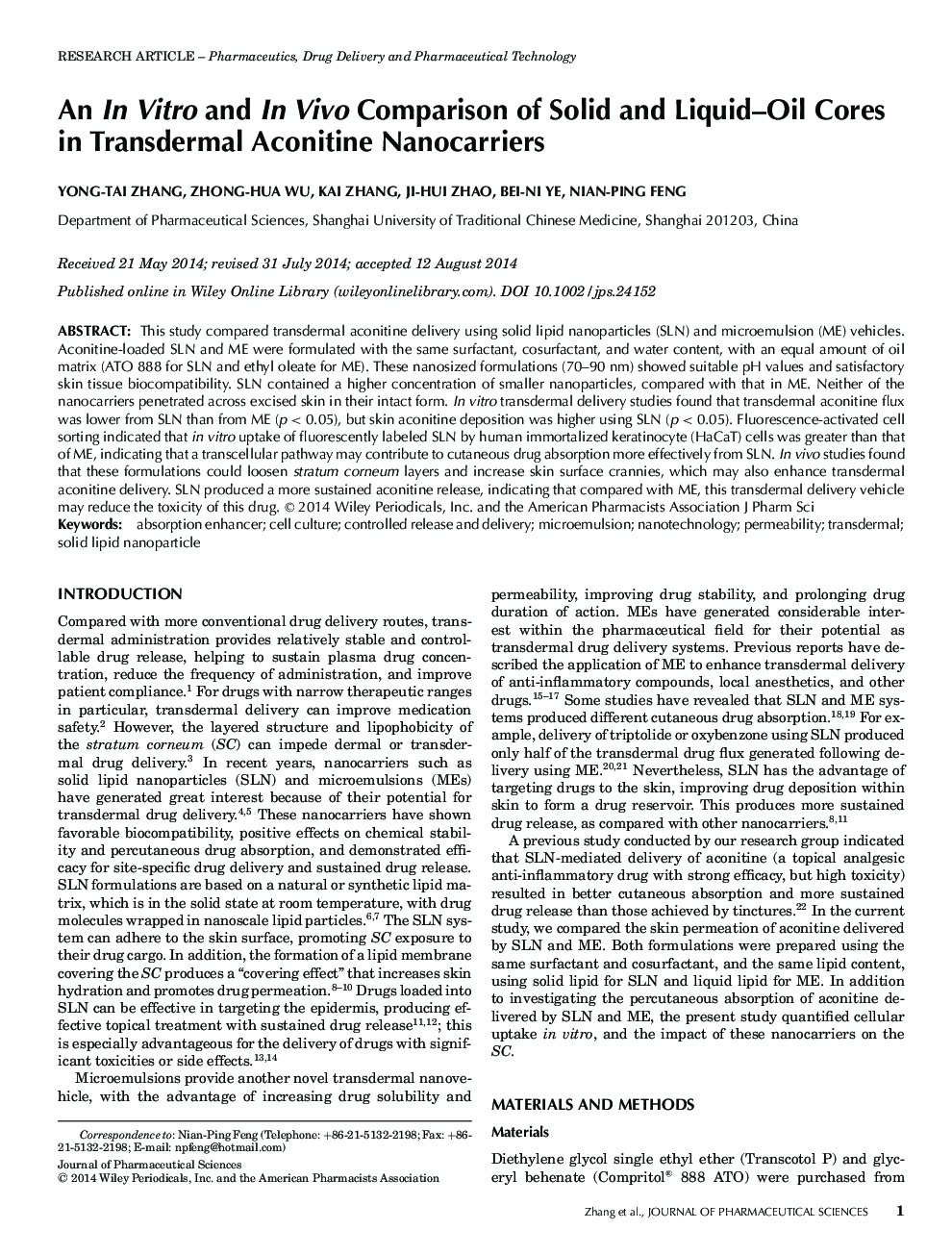| Article ID | Journal | Published Year | Pages | File Type |
|---|---|---|---|---|
| 10162267 | Journal of Pharmaceutical Sciences | 2014 | 9 Pages |
Abstract
This study compared transdermal aconitine delivery using solid lipid nanoparticles (SLN) and microemulsion (ME) vehicles. Aconitineâloaded SLN and ME were formulated with the same surfactant, cosurfactant, and water content, with an equal amount of oil matrix (ATO 888 for SLN and ethyl oleate for ME). These nanosized formulations (70-90 nm) showed suitable pH values and satisfactory skin tissue biocompatibility. SLN contained a higher concentration of smaller nanoparticles, compared with that in ME. Neither of the nanocarriers penetrated across excised skin in their intact form. In vitro transdermal delivery studies found that transdermal aconitine flux was lower from SLN than from ME (p < 0.05), but skin aconitine deposition was higher using SLN (p < 0.05). Fluorescenceâactivated cell sorting indicated that in vitro uptake of fluorescently labeled SLN by human immortalized keratinocyte (HaCaT) cells was greater than that of ME, indicating that a transcellular pathway may contribute to cutaneous drug absorption more effectively from SLN. In vivo studies found that these formulations could loosen stratum corneum layers and increase skin surface crannies, which may also enhance transdermal aconitine delivery. SLN produced a more sustained aconitine release, indicating that compared with ME, this transdermal delivery vehicle may reduce the toxicity of this drug. © 2014 Wiley Periodicals, Inc. and the American Pharmacists Association J Pharm Sci 103:3602-3610, 2014
Keywords
Related Topics
Health Sciences
Pharmacology, Toxicology and Pharmaceutical Science
Drug Discovery
Authors
YongâTai Zhang, ZhongâHua Wu, Kai Zhang, JiâHui Zhao, BeiâNi Ye, NianâPing Feng,
